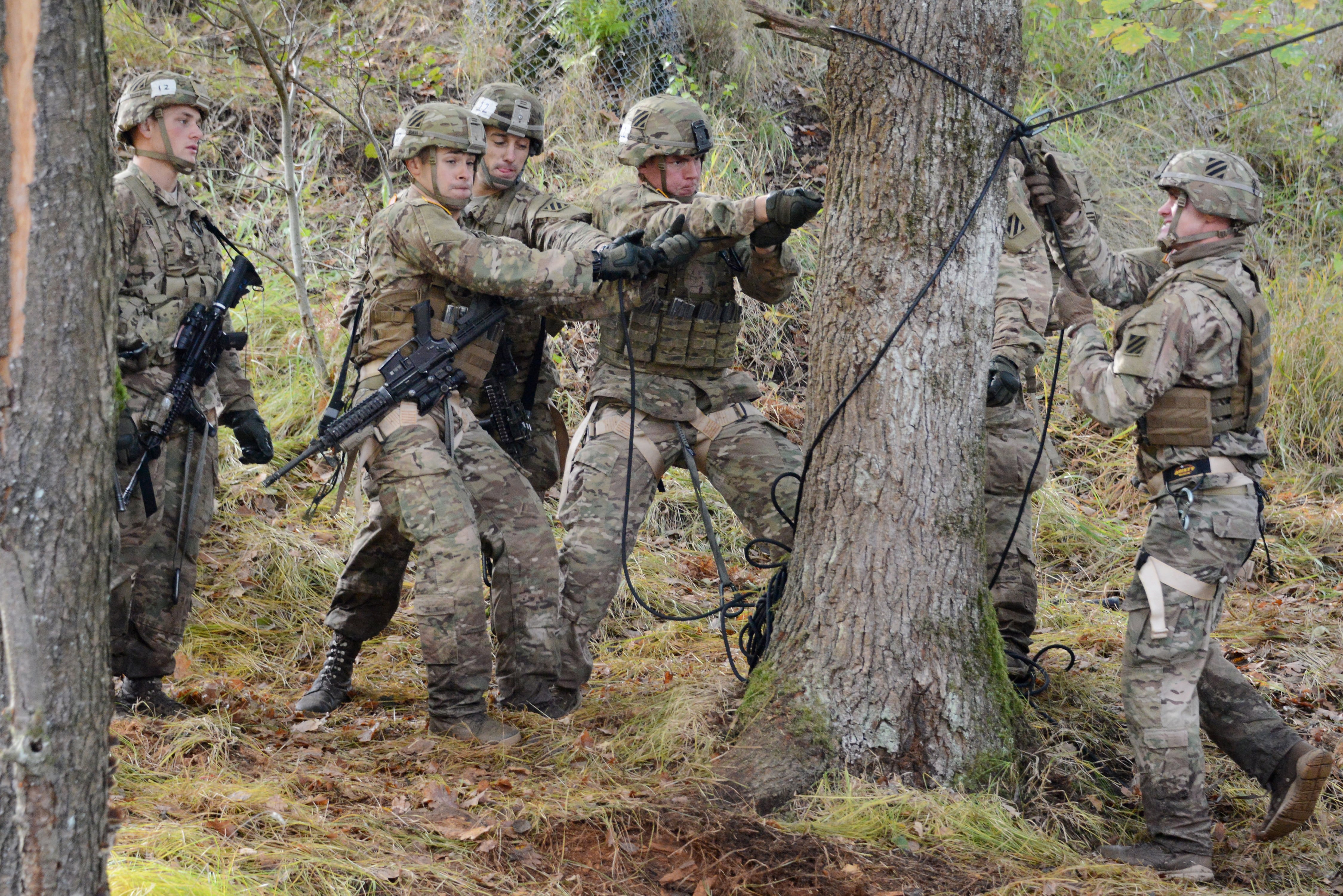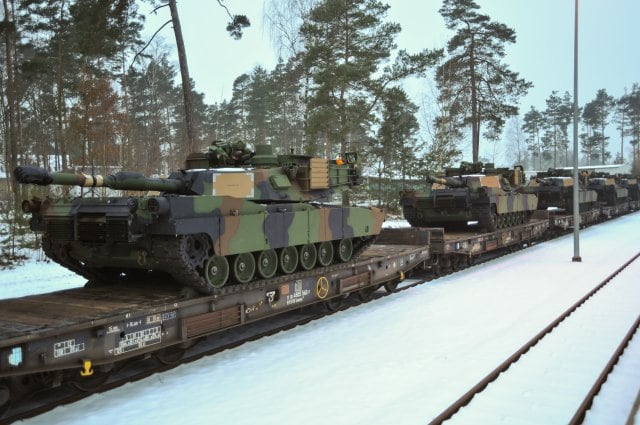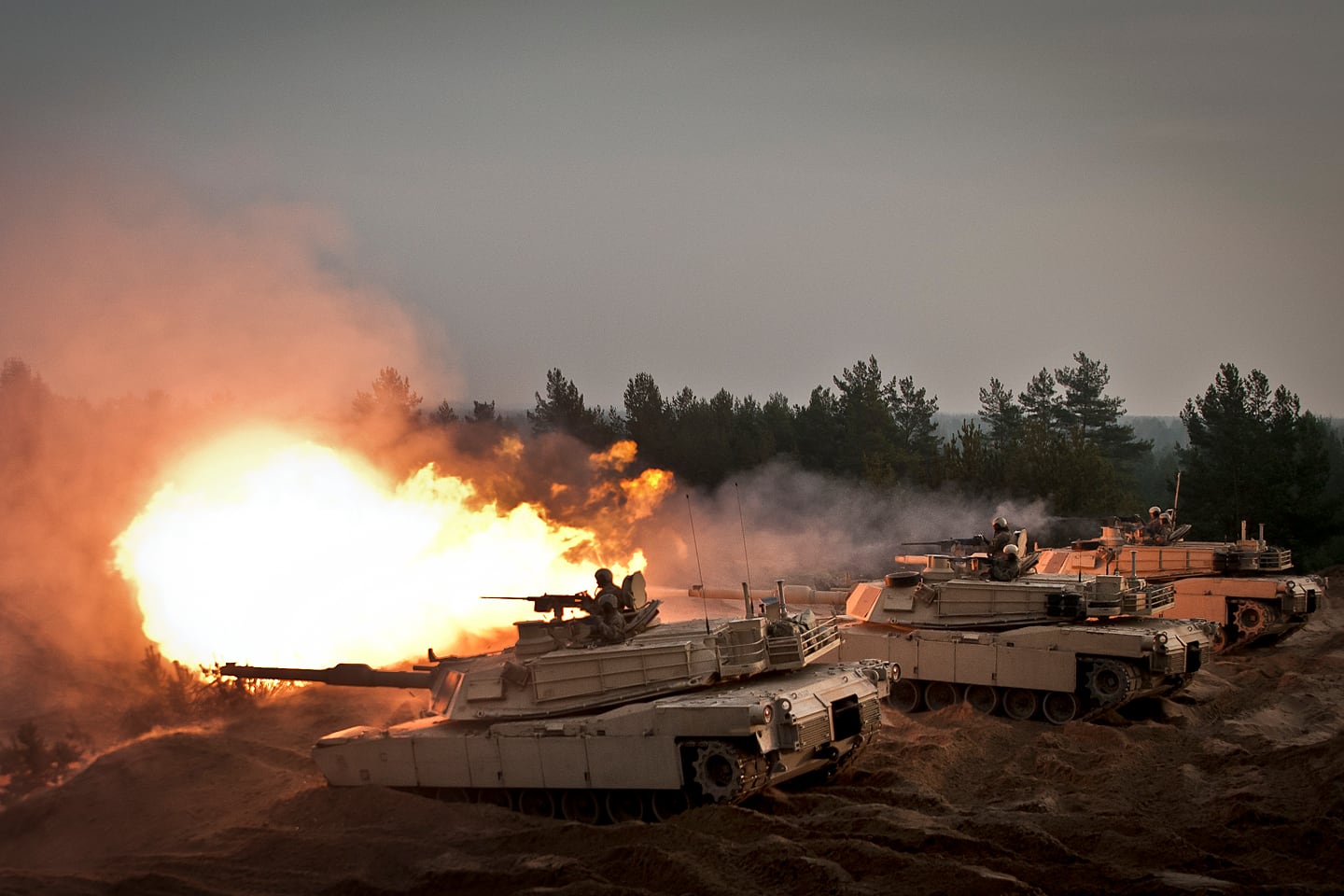The Army's armored brigade combat teams could soon begin back-to-back rotations in Europe as the Pentagon looks to boost the region's defense against Russia.
The military's 2017 budget request, released Tuesday, calls for $3.4 billion for the European Reassurance Initiative. The request quadruples previous funding levels and signals a new recognition that the former Cold War foe is once again a major global rival.
If approved, the Army will begin what it calls "heel-to-toe" — or continuous — rotations of an armored BCT into Europe. The move would come just five years after budget cuts forced the Army to shut down the two heavy brigades stationed in Europe and bring home all its tanks and other heavy vehicles.
It also adds an additional overseas requirement for the Army's already busy armored brigade combat teams.
The active Army only has nine ABCTs, and they already are tasked with nine-month rotations to Kuwait and South Korea.
Officials are still trying to determine if the ABCT sent to Europe will deploy for nine months or if they might do shorter rotations, said Maj. Gen. Walter Piatt, director of operations, readiness and mobilization in the Army G-3 (operations).
"It could be nine months or it could change year to year," he said, adding that the Army wants to give Forces Command, which is tasked with providing trained and ready units for deployment, flexibility as it works out the way ahead.
The also Army is looking at how to get the 1st Armored Division's 2nd Brigade Combat Team, which is currently dedicated to the Army's ongoing Network Integration Evaluation at Fort Bliss, Texas, back into the mix, Piatt said.
The Army would then fill the demand at NIE on a rotational basis as well, he said.
The service also is looking at the feasibility of using Army National Guard armored brigade combat teams for some rotations, Piatt said.
"This is going to be a challenge for the Army to do, to sustain readiness and every increasing, emerging demand as well," he said.
In its recently released report, the National Commission on the Future of the Army went even further, recommending the Army permanently station an armored BCT in Europe because of the "changing security environment in Europe" and the region's "value as a stationing location for potential contingencies in the Middle East."
"There's no excess capacity in the Regular Army to meet an unforeseen contingency," retired Gen. Carter Ham, the commission's chairman, testified Thursday on Capitol Hill.
Stationing an ABCT in Germany eases some of the demand on the brigades because it takes at least three brigades — one deployed, one just coming home, and one preparing to go — to sustain a rotation, he said.
It also would have a strong effect in deterring Russia and assuring NATO allies, Ham said.
For now, the Army has been filling the need for an armored BCT with regionally-allocated forces. That mission currently falls to 1st BCT, 3rd Infantry Division, of Fort Stewart, Georgia, which has been sending soldiers to Europe for short-term rotations. In between their rotations, soldiers from 2nd Cavalry Regiment and the 173rd Airborne BCT, the two remaining BCTs in Europe, fill in until the 3rd Infantry soldiers return for their next cycle.

Soldiers, assigned to 1st Armored Brigade Combat Team, 3rd Infantry Division, conduct the Urban Casualty Evacuation lane during the European Best Squad Competition at the 7th Army's Joint Multinational Training Command's, Grafenwoehr training area, Bavaria, Germany, on Oct. 20.
Photo Credit: Gertrud Zach/Army
In addition to the brigade, the Army has regionally allocated the 4th Infantry Division headquarters and several enabler units to Europe. An additional 30,000 soldiers are permanently stationed in Europe, which is about 10,000 fewer than in 2012.
To meet the high demand, the Army needs "predictability" so it can properly plan for and prepare its deploying units, Piatt said.
"That puts a huge demand on FORSCOM to provide trained and ready forces," Piatt said.
It also requires the Army to transition to a new readiness model, known as the Sustainable Readiness Model. This would replace the Army Force Generation Model, or ARFORGEN, which the service developed and executed during the height of the wars in Iraq and Afghanistan.
ARFORGEN progressively resets and trains units for possible deployments, a model that worked at the time because the Army was focused on rotating in and out of Iraq and Afghanistan on nine- to 12-month deployments.
ARFORGEN doesn't work as well anymore as the Army's missions have evolved, and the service regularly sends soldiers on short-term missions or new missions in new locations around the world.
Under the Sustainable Readiness Model, units are given the equipment they need and are required to maintain it as they go. Units don't focus on being ready to deploy at one specific time. Instead, they are always in some state of readiness, able to deploy when needed.
Over the past two years, the United States has increased military activities in Eastern and Central Europe to reassure its allies and partners in the face of Russian aggression. The Army, for its part, launched Operation Atlantic Resolve in April 2014. The ongoing series of exercises and engagements began in the three Baltic States and Poland as a way for the U.S. to demonstrate its commitment to NATO after the Russian occupation of Crimea. It has since expanded to more than half a dozen countries.

M1A2 Abrams tanks arrive at the Grafenwoehr Training Area in 2014.
Photo Credit: Markus Rauchenberger/Army
In addition to increasing the ABCT rotations, the budget request for Europe also pays for more Guard and Reserve rotations into the region for training exercises and additional equipment, including tanks and Bradley Fighting Vehicles.
The additional equipment, or the Army Prepositioned Stock, will be a "brigade set plus enablers," Piatt said.
"We know we have to have it there, and it has to be modern equipment, too," he said.
This set will be only used in case of a contingency. It will be the second armored brigade's worth of equipment in the region; the first set, known as the European Activity Set, is in place for use by regionally aligned units rotating into Europe from the United States.
The European Activity Set has about 12,000 pieces of equipment. About 250 of those are heavy, tracked vehicles, including the M1A2 Abrams tank, the Bradley Fighting Vehicles, and howitzers.
The budget request highlights "the commitment to our European allies and the NATO alliance, and how we're trying to reestablish and commit our forces there," Piatt said. "Our presence, our assurance means something."
Michelle Tan is the editor of Army Times and Air Force Times. She has covered the military for Military Times since 2005, and has embedded with U.S. troops in Iraq, Afghanistan, Kuwait, Haiti, Gabon and the Horn of Africa.




